#athenian owl
Explore tagged Tumblr posts
Text
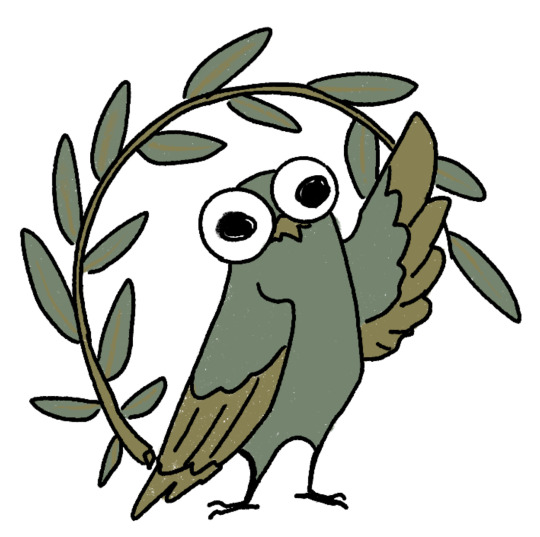
I drew a lil athenian owl since i was lucky egnough to visit this week!
#owl#athena#athenian owl#greek mythology#ancient greek#one thing that realy pissed me of when visiting th is that most of the stuff in the acropolis museum was plaster casts#the originals are in the *fucking british museum*#* and some pillars from sunion are in some ritch wankers garden with his bust ontop of them
6 notes
·
View notes
Text

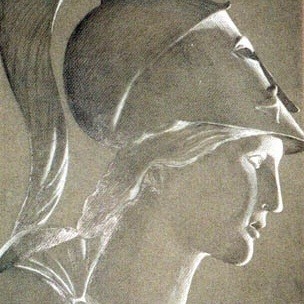



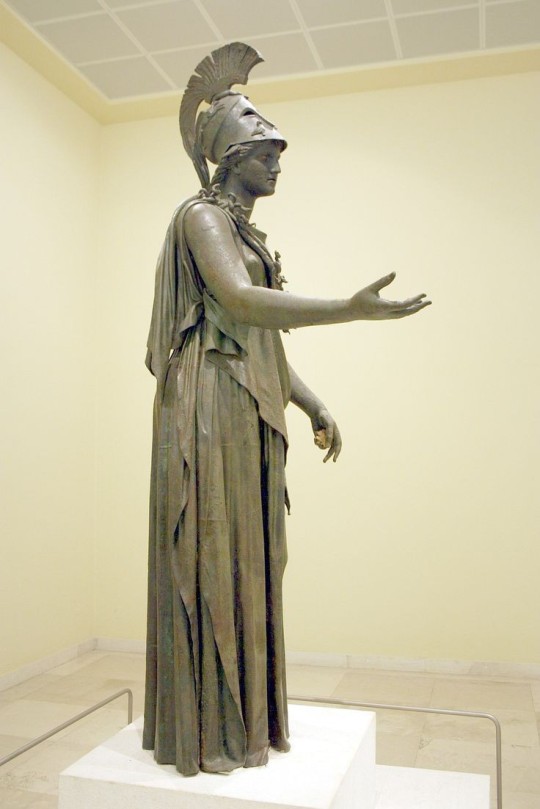
Athena Piraeus. Discovered in 1959, the 8ft tall bronze statue of the Goddess dates to second half of the 4th Century BC. 🏺🏛
#athena#athena statue#bronze athena#bronze statue#goddess of wisdom#goddess#greek goddess#greek mythology#athens#athenian#piraeus#aegis#she who shall defend#owl#the grey eyed one#lady athena#daughter of zeus#metis#war strategy#my goddess#⚔️🏛#greece#ancient greece#greek art#sculpture
44 notes
·
View notes
Text

"does charidas rest under you?"
"if you speak of the son of arimmas of cyrene, he is under me."
"what is below, charidas?"
"a lot of darkness."
"what about the way back up?"
"a lie."
"pluto?"
"a myth."
"then i am destroyed!"
"what i tell you is truthful: if it's something pleasant you want instead, in hades a large bull costs half an obol (?????)*."
*Marcovich, M. “CALLIMACHUS’ EPIGRAM XIII AGAIN.” Revue Des Études Grecques 83, no. 396/398 (1970): 351–55.
2 notes
·
View notes
Text
Top 10 Best Historical Coins for Collectors
The world of historical coin collecting is a fascinating intersection of art, history, and investment. Each coin carries with it the story of the era it represents, whether it's from ancient civilizations, significant historical events, or minted during the reign of great rulers. Collectors in the luxury niche appreciate historical coins not only for their beauty and rarity but also for their intrinsic value as pieces of world history. In this blog, we explore the top 10 best historical coins for collectors, delving into their backgrounds, rarity, and why they continue to captivate collectors.
1. Athenian Owl Tetradrachm (Circa 440 BC)
The Athenian Owl Tetradrachm is one of the most iconic coins from ancient Greece, recognized by its detailed depiction of an owl, the symbol of Athena, the goddess of wisdom. Minted in silver, this coin was used as currency throughout the ancient Greek world and remains one of the most collectible ancient coins today. Collectors prize the Tetradrachm for its symbolism and craftsmanship. Its strong association with the golden age of Athens and its link to the birthplace of democracy make it a standout in any collection. Depending on its condition, an Athenian Owl Tetradrachm can fetch prices ranging from $1,000 to over $20,000.
2. Roman Denarius of Julius Caesar (Circa 44 BC)
Coins featuring Julius Caesar hold immense historical significance, particularly the Roman Denarius issued during his reign. This coin, minted just before his assassination in 44 BC, features a portrait of Caesar on one side and various Roman symbols on the reverse. It is one of the earliest examples of a living ruler being depicted on currency, marking a critical shift in Roman coinage. Collectors of ancient coins are drawn to the Roman Denarius for its rarity and its direct connection to one of history’s most famous figures. Prices for Julius Caesar Denarii vary but can reach into the tens of thousands of dollars, especially for well-preserved pieces.

3. St. Gaudens Double Eagle (1907-1933)
The St. Gaudens Double Eagle is often regarded as one of the most beautiful coins ever produced by the United States Mint. Designed by the famous sculptor Augustus Saint-Gaudens, the coin features a striking depiction of Lady Liberty striding forward with a torch and an olive branch, symbolizing enlightenment and peace. These $20 gold coins were minted from 1907 to 1933, with certain rare editions, like the 1933 Double Eagle, becoming extremely valuable. One 1933 Double Eagle sold for over $7 million at auction, making it one of the most expensive coins in the world. Collectors appreciate the Double Eagle for its beauty, historical significance, and rarity.
4. Spanish 8 Escudo "Gold Doubloon" (Late 16th to 19th Century)
The Spanish 8 Escudo, also known as the "gold doubloon," is one of the most famous coins from the Age of Exploration. Minted in the Spanish colonies, these large gold coins were used extensively in trade and became synonymous with pirate treasure. Their historical connection to the Spanish Empire, the wealth of the New World, and the era of maritime exploration make them highly sought after by collectors. Gold doubloons are valued based on their condition, minting date, and rarity, with well-preserved examples selling for upwards of $10,000 or more.
5. British Gold Sovereign (1817-Present)
The British Gold Sovereign is one of the longest-running coinage series in history, with its roots stretching back to 1817. Featuring the profile of the reigning British monarch on one side and the iconic image of St. George slaying the dragon on the other, the gold sovereign has remained a symbol of British stability and power. Collectors are particularly interested in rare or early sovereigns, such as those minted during the reign of Queen Victoria or George III. While modern gold sovereigns are still produced today, the older and rarer ones can fetch thousands of dollars at auction, especially those from limited mintages or special issues.
6. Morgan Silver Dollar (1878-1904, 1921)
The Morgan Silver Dollar is an American classic and a favorite among coin collectors for its historical value and beautiful design. Minted during the late 19th and early 20th centuries, it features a portrait of Lady Liberty on one side and an eagle on the reverse. Named after its designer, George T. Morgan, this silver dollar is particularly prized for its large size, high silver content, and its place in American history during the post-Civil War era and the westward expansion. Collectors particularly seek rare mint marks, such as those from the Carson City Mint, with prices for these rarities reaching into the thousands.
7. 1794 Flowing Hair Silver Dollar
Considered one of the most valuable American coins, the 1794 Flowing Hair Silver Dollar was the first silver dollar ever struck by the United States Mint. The coin features a portrait of Lady Liberty with flowing hair on the obverse and an eagle surrounded by a wreath on the reverse. With fewer than 200 known to exist, this coin is exceedingly rare, and its historical significance makes it one of the most desirable coins for collectors. In 2013, a 1794 Flowing Hair Silver Dollar sold for a record-breaking $10 million, highlighting its value as a key piece of American numismatic history.
8. Ducat of the Dutch Republic (Late 16th to Early 18th Century)
The Dutch Ducat is one of the most famous gold coins from Europe, minted from the late 16th century through the early 18th century. It became widely accepted in international trade and is known for its high gold content and consistent quality. The ducat often featured a knight holding a sword and a bundle of arrows, symbolizing strength and unity. Collectors are drawn to these coins not only for their historical value but also for their connection to the Dutch Republic’s period of economic and military power. Prices for well-preserved Dutch ducats can range from $2,000 to $10,000.
9. Chinese Yuan Shih-kai Silver Dollar (1914-1928)
Also known as the "Fat Man" Dollar, the Chinese Yuan Shih-kai Silver Dollar is one of the most iconic coins from early 20th-century China. The coin features a portrait of Yuan Shih-kai, the first president of the Republic of China, making it a significant piece of Chinese history. These silver dollars were heavily circulated, but high-quality examples are becoming increasingly rare and valuable. Collectors of Asian coins appreciate the historical context of the Yuan Shih-kai dollar, and prices for these coins have steadily risen in recent years, with top-grade examples selling for thousands of dollars.
10. Constantine the Great Solidus (Circa 4th Century AD)
The Constantine the Great Solidus is one of the most valuable coins from the Roman Empire, minted during the reign of Emperor Constantine in the 4th century AD. This gold coin symbolizes the transition of Rome into a Christian empire and Constantine’s significant role in shaping European history. The solidus remained the standard for gold coinage in the Byzantine Empire for centuries, and collectors are drawn to its historical importance and the fact that many of these coins have survived in excellent condition. Prices for Constantine solidus coins can range from $5,000 to over $20,000, depending on their rarity and condition.
A spokesperson from Coveted, a premier platform for collectible connoisseurs, shared their thoughts on the allure of historical coins for collectors. “Coins are tangible pieces of history, each telling its own story of the time and place it was minted. From ancient Greek coins to American classics, collectors today are not just purchasing metal, they’re investing in history. At Coveted, we help connect collectors with rare and historically significant coins, ensuring that these treasures are passed down through generations. Owning a rare coin is like holding a piece of the past in your hands, and it’s a truly rewarding experience.”
#Historical Coins#Coin Collecting#Ancient Coins#Rare Coins#Athenian Owl Tetradrachm#Roman Denarius#Julius Caesar#St. Gaudens Double Eagle#Gold Coins#Numismatics#Coin Investment#Collectible Coins#Antique Coins#Roman Coins#Greek Coins#American Coins#Luxury Collectibles#Coin Auctions#Coin History#Valuable Coins
3 notes
·
View notes
Text
Now that the semester has ended, I’ll be going over the completely detail-less itinerary of a wedding that’s in two days 5 hours from my house in an attempt to plan every step so I don’t get overwhelmed because of the autism thing while also trying to figure out if there’s enough buffer time on the ends of the event that I can get away with safely binding the whole time without needing to take up half my bag to bring a backup bra to the venue because of the trans thing. Pray for me, people in my phone.
#at least I can wear the Athenian Owl tie I got at Getty Villa#it will clash with my hair but I only have two ties and both of them clash so it’ll be fine#if only I had considered the color of my two ties when I dyed my hair but alas#fingers crossed my suit still fits I guess. just remembered I forgot to try that on#also time to play the game How Many Autism Things Can LQC Fit In Their Purse For This Event#and the bonus minigame Will They Remember Their Earplugs Or Will They Suffer#weddings are so stressful#local queer classicist posts#neurodivergent things#disability stuff#actually autistic#queer stuff#I also at some point need to make a lvl 20 dnd character for a 1 shot a friend is running this weekend where we’re going to kill god#and plan to celebrate saturnalia next week because godsdamnit we feast this year
2 notes
·
View notes
Text
Starting November 13rd 2023...
Please repost if you like it because I want to popularize this. Also hoping an artist comes across this, hopefully not wanting to be paid, cuz I'm thirteen and broke as hell.
I will be making new issues/chapters every Monday of a series I'm making called Murder Owls, starting the 13th of November
It follows mainly four people: A bisexual man, his cishet cousin, his pan trans cousin, and his lesbian best friend. What they do here is they kill rapists and anyone who follows what the Greek god, Zeus does.
10 years before this takes place, so 2025, the Greek Gods have a civil war of some sorts. Zeus's side wants to continue to directly interact and interfere with human life. While Athena's side does not want to interfere and use vessels of some sort.
However, this series will eventually develop different plotlines and different storylines but the first one that starts on Nov 13 follows what I've just explained.
Follow and repost, and don't forget to have a good day/night/afternoon/evening/morning
#murder owls#lgbt#gay#transgender#lgbtq#adhd#bullet train#athenian mistress#November 3rd 2023#rapist murder#murdering rapists#gulf#beta#julien#greek mythology#kind of like bullet train#kind of like percy jackson#assassin#assassins#every week#every friday
0 notes
Text

ATHENA
“I begin to sing of Pallas Athena, the glorious goddess, bright-eyed, inventive, unbending of heart, pure virgin, saviour of cities, courageous, Tritogeneia. Wise Zeus himself bare her from his awful head, arrayed in warlike arms of flashing gold, and awe seized all the gods as they gazed. But Athena sprang quickly from the immortal head and stood before Zeus who holds the aegis, shaking a sharp spear: great Olympus began to reel horribly at the might of the bright-eyed goddess…” (-Homeric Hymn, translated by H.G. Evelyn white)
ATHENA (uh-THEE-na) , the virgin goddess of wisdom, war, strategy, defense, city state building and crafts like pottery, and patron goddess of Athens. In my Illustration she towers above Athens, as the city's patron and eternal defender.
She was born from Zues' head fully armed, and wears upon her chest plate armor the infamous Aegis, with medusa's head, (sometimes depicted as a shield) which is used as a protective amulet and was said to let out a terrible roar in battle. Upon her shield is a horse and rider wearing a bridle, which Athena invented for mortals to ride and control horses (along with chariots and wagons).
Upon her arm is her sacred animal, the owl, with its night vision, having the ability to see things that others cannot, hence it being a symbol of wisdom. The snake at her feet represents the early Athenian ruler, Erichthonius, whose symbol was the snake. He is represented below the statue of Athena in the Parthenon as the snake hidden behind her shield. The most sacred building on the Acropolis of Athens, the Erechtheum, is dedicated to Erichthonius.
Support my book kickstarter "Lockett Illustrated: Greek Gods and Heroes" coming in early 2024.
Linktree:https://tr.ee/DcjSQDSEv3
#pagan#hellenism#greek mythology#tagamemnon#mythology tag#percyjackson#dark academia#greek#greekmyths#classical literature#percy jackon and the olympians#pjo#homer#iliad#classics#mythologyart#art#artists on tumblr#odyssey#literature#ancientworld#ancienthistory#ancient civilizations#ancientgreece#olympians#greekgods#agamemnon#troy#trojanwar
606 notes
·
View notes
Text
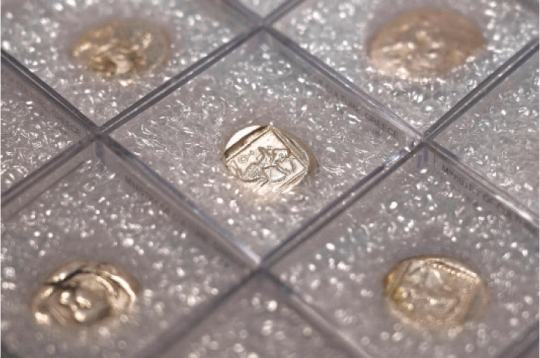
Greece Returns 1,055 Ancient Coins to Turkey
Greece on Thursday returned a hoard of over 1,000 stolen ancient coins to Turkey in the first repatriation of its kind between the historic rivals and neighbors, Agence France-Presse reported.
The move came a few months after Turkey publicly supported Greece in its long quest to reclaim the Parthenon Marbles from the British Museum in London.
Greek Culture Minister Lina Mendoni said the hoard of 1,055 silver coins had been seized by Greek customs guards on the border with Turkey in 2019.
“These coins had been illegally imported,” Mendoni said at a ceremony at the Numismatic Museum, which specializes in currency and medal collections, in Athens.
Greeks are “particularly sensitive” to repatriation issues, she said.
“All illegally exported antiquities from whichever country should return to their country of origin,” Mendoni added.
Turkish Culture Minister Mehmet Nuri Ersoy said the operation was the first repatriation from Greece.
Greek and Turkish experts determined that the coins were part of a stock hidden in Asia Minor between the late 5th and early 4th century BCE, she added.
While research is ongoing, it is possible the hoard was secreted in modern-day Turkey during the Persian Wars expeditions of Athenian general Cimon, a veteran of the 480 BCE Battle of Salamis, she added.
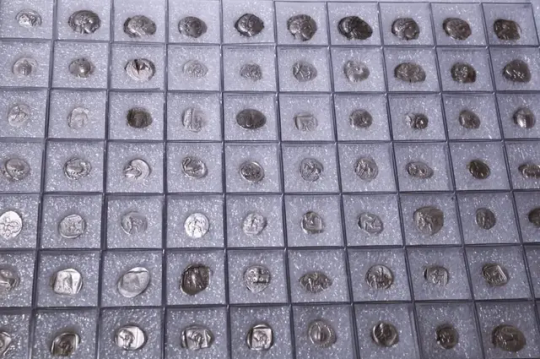

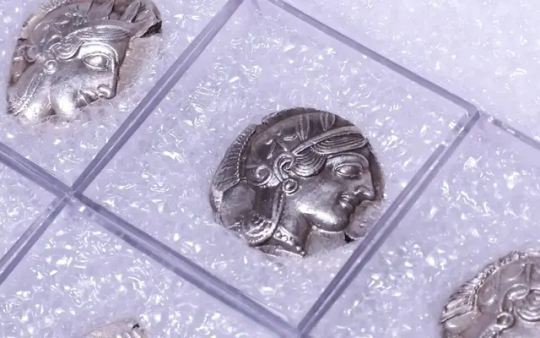
Broadly used
Most of the cache were tetradrachms — ancient large silver coins — originally minted in Athens and used broadly in the eastern Mediterranean, said Museum Numismatologist Vassiliki Stefanaki, a coinage expert.
Stamped with the image of an owl, the Athenian relics were also used locally to pay tribute to the Persian Empire, and Persian governors used them to reward their troops, she said.
Other coins came from Cyprus, the islands of Aegina and Milos, from Asia Minor cities founded by Greek settlers, the Iron Age kingdom of Lydia, and Phoenicia in modern-day Lebanon, officials said.
Mendoni on Thursday also thanked Turkey for supporting Greece’s campaign to secure the return of the Parthenon Marbles from London.
The British Museum has long maintained that the Marbles were removed from the Acropolis in Athens by royal decree granted to Lord Elgin, the British ambassador to the Ottoman Empire.
But in June, Zeynep Boz, the head of the Turkish Culture Ministry’s anti-smuggling committee, told a UNESCO meeting in Paris that no such document had been found in Ottoman archives.
Her statement was “decisive” in favor of Greece’s position, Mendoni said Thursday.
Ersoy through a translator said Turkey wanted “with all its heart” to see the Marbles return to Athens.
“The Greek people should have them, they belong to them,” he said.
Boz, who attended Thursday’s ceremony in Athens, told Agence France-Presse that the timing of the coins’ return by Greece was not related to her report in June.
The five-year delay was caused by the time required by the Greek justice system to authorize the coins’ repatriation, she said.
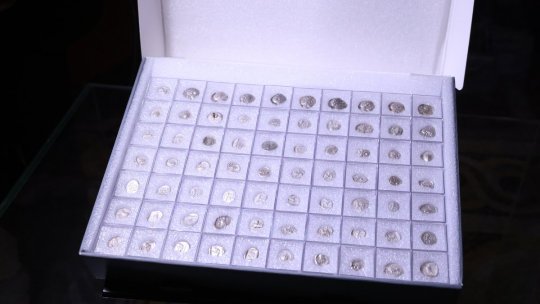

#Greece Returns 1055 Ancient Coins to Turkey#silver#silver coins#ancient coins#ancient artifacts#tetradrachms#Persian Empire#archaeology#archeolgst#history#history news#ancient history#ancient culture#ancient civilizations#looted#stolen
78 notes
·
View notes
Text

happy last art post of 2024 i spent it drawing the epic cycle…. Like are you kidding me Who do you think i am (individuals and design thoughts below)


Athena’s curly hair is meant to resemble an owl. In the future I want to incorporate how high and back her helmet sits in ancient art of her. Yes, those are owl feathers! I wanted to lean into her Goddess of War steely (eyed) figure, so focused heavy on large and exaggerated armor with lots of grays. But she’s also the goddess of crafts, so i also added more delicate detailing to her armor and the loops of fabric. Her blue draws on Athenian iconography and also Athens’ naval superiority in Ancient/Classical/Hellenistic Greece. And since the myth of Perseus occurs before the Epic cycle, I thought it was appropriate to give Athena her aegis.
I focused on giving Telemachus a very boyish look since his arc is really about growing into his own, a coming of age. So he has more delicate and refined features than what I imagine “rugged” Odysseus would have. Telemachus wears a signet ring as a symbol of his royal authority. I did debate on if i should make him similarly left handed like his mentor (as well as how i envision Odysseus, given how tricky and slippery he is), but I understand that the ancient Greeks viewed displaying your left shoulder as “barbaric,” which i didn’t think fit Telemachus’s “princely”-ish vibe. I was influenced by most EPIC!Telemachus designs that put him in blue, but i really like putting an edge of red in there as well, both for how striking the blue and red fit against each other and because i think it lends him a more ruly edge that appears in the Odyssey (Telemachus “I’ve never held a conversation in my life, Athena” prince of Ithaca). The blue is supposed to be like the sea surrounding Ithaca, and to make that a bit more clear, i added wave detailing around the top edge of the chlamays. I consulted statues of Telemachus to see what kind of tunic to put him in.
Both of them wear archer gloves (athena on her left hand because i think it would be fun if it she was a leftie but anyway) bc athena is the goddess of war and also odysseus’ patron and telemachus because he’s his father’s son and also bc his name means “far from battle” but can also be read as “fighting from afar” understanding his role in the Odyssey and also how he grew up as consistently unsafe in his own house.
I really like these designs and im excited to draw them more :D
#em.txt#the odyssey#athena#telemachus#epic the musical#epic athena#epic telemachus#my art#pleaseeeee talk to me abt the odyssey or abt epic#this poem (alongside Euripides’ Medea) is why i decided to study the classics after all!!!!!!!#well. that and the fact that im a language nerd. ugh
100 notes
·
View notes
Text

The “owl on #Athena coins” typically refers to the ancient Athenian tetradrachm, a silver coin minted in Athens starting around 510 BCE. The Reverse usually depicts An #owl , representing wisdom, with an olive branch and crescent moon, symbolizing prosperity and peace. The inscription “ΑΘΕ” (short for “Athens”) is also present.This coin, known as the “owl,” became widely recognized and circulated across the Mediterranean world, serving as an early example of international currency. It is celebrated for its artistic design and historical significance. #archaeology #history #ancient #art #alsadeekalsadouk #ancienthistory #travel #archaeological #rome #italy #museum #heritage #greek #arthistory #antiquity
#4thcentury #photography #tetradrachm #greekcoin #greekarcheology #greekancientcoins #stater #الصديق_الصدوق
#Greek_mythology
#history#archaeology#photography#culture#greek coins#travel#roman coins#palestrina#sidon saida tyre beirut phoenician الصديق_الصدوق#الصديق_الصدوق#athena#owlcreek#owl
33 notes
·
View notes
Text
Greek Gods 101: Odysseus
Odysseus is a hero in Greek history. Excluding the universal offerings, some common offerings include:
The Book “The Odyssey”
Depictions of Boats
Depictions of Donkeys or Oxes
Salt
Weapons or Depictions of Weapons
Depictions of Owls
Depictions of Horses
Leather Bags
Depictions of Moly (The Mythical Herb)
Photos or Statues of Argos
For devotional acts, some activities that can be done for him include:
Learning How to Sail
Going on Adventures
Learning How to Persuade People
Listening to Persuasive Speeches (Especially Ones Made in Times of War)
Learning How to Wrestle
Practicing Self-Restraint
Researching Past Wars and Battles
Learning About War Heroes
He is not celebrated in any Athenian holidays.
#odysseus#odysseus hero#deities#hellenism#helpol#hellenic#hellenic pagan#hellenic polytheism#hellenic polytheist#hellenic community#hellenic deities
68 notes
·
View notes
Text
🦉Athena Masterpost🦉
This masterpost will cover very basic information with links to further posts or resources (otherwise it’s super long) and may be updated in future with extra sections. Basic bibliography at the end. I welcome you to share your UPG and resources in the comments - I won’t differentiate between mine and others’ UPG.
UPG = Unverified Personal Gnosis, SPG = Shared Personal Gnosis, H = Historically Inspired association
Last updated: 5 Feb 2025, added my ko-fi
Love this post? Consider thanking me with a small donation to my ko-fi!

Overview
Athena is the Hellenic goddess associated most commonly with wisdom, war, weaving, and in modern times, education and knowledge. She was a goddess who occupied both masculine and feminine roles in a highly patriarchal society, standing outside the societal binary. She is a fascinatingly variable and nuanced deity who has adapted and persisted in the mind of western society until this day. This masterpost is in dedication to her.
“Through our investigation of [Athena’s] role within the pantheon, she has emerged as a power of technology and creativity who promotes creativity and order, but with another side to her power, that of the storm bringer and warmonger.” -Susan Deacy
Athena, Goddess of…
Metis (Cunning)
Skill
Crafts
Invention
War
Civilization
Hero Mentorship
Education and Knowledge [SPG]
🐍Find out More!🐍

Symbols, Colors & Tarot Cards
Traditional: Owls (Specifically the Little Owl, Athene noctua), Snakes, Horses, Gulls, Crows (In Messenia and Boeotia, though elsewhere she was not fond of them), Olive trees, the Aegis, the Gorgoneion, Spindle, Spear, Helmet (Particularly with gryphons and/or sphinxes on it).
Other symbols: Spiders [Roman & SPG], Books and Scrolls [SPG], Pens or Quills [UPG]
Colors: Saffron/Yellow/Orange/Gold [H], Murex Purple [H], Hyacinth Blue [H], Red [H?], Bronze [H], Green [UPG]
🐍Find out More!🐍
Tarot Cards (All UPG/SPG of course): The Emperor, The Hierophant, The Chariot, Strength, Justice, The World, Knight of Pentacles, Queen & King of Swords, Queen & King of Wands

Name & Epithets:
Athena has some variations in name. The Attic form was “Athenaia”, which was contracted to “Athena,” the Ionian form was “Athenaie,” the Doric form “Athana,” in Aeolic, “Athanaa,” and in epic she was “Athenaie,” shortened to “Athene.”
A few common epithets:
Areia - Warlike
Ergane - The Worker
Glaukôpis - Bright/owl-eyed.
Pallas - Refers either to the myth of Athena’s childhood friend Pallas, or of the giant named Pallas whom she slayed.
Parthenos - Maiden
Polias - Of the City
Polymetis - Cunning in many ways
🐍Find out More!🐍

Offerings and Devotional Acts
This section was super long! Only including a few here but check out the link!
Gemstones & Metals - Gold, Lapis Lazuli, Onyx, Iolite
Plants - Olive, Ivy, Thyme, Rosemary, Cypress, Peppermint, Orange
Incense and Fragrances - Frankincense, Thyme, Bay Laurel, Amber, Myrrh, Dragon’s Blood, Orange, Citrus, Cedarwood, Cinnamon, Cypress, Bergamot & Sage
Food & Drink - Olives and Olive Oil, Honey, Milk, Cheese, Cereal Grains, Diluted Wine, Bread, Baked Goods, Fish, Meat, Fruit/Fruit Juice, Water
🐍Find out More!🐍

Athenian Festivals
Athena’s main festivals were the Panathenaia, Khalkeia, Kallynteria and Plynteria. It is up to individuals to decide if and how to include these celebrations in their practice.
Panathenaia: The biggest festival for Athena taking place annually, but with a bigger version every fourth year. Mainly a festival with athletic, poetry and musical competitions.
Kallynteria and Plynteria: Sacred days centered around cleaning.
Arrephoria: A mysterious festival that took place at night and is theorized to have been a fertility rite.
Khalkeia: The festival of artisans, which celebrated Athena and Hephaestus.
🐍Find out More!🐍

Family & Connections
Parents: Athena’s father was Zeus (Except in Libya, where she was known as Poseidon’s daughter) and her mother was the personification of wisdom, Metis. In some sources she was raised by Triton alongside his daughter, Pallas.
Children: Athena had no children as a virgin goddess but she did adopt and raise Erichthonius, who later became king of Athens.
Retinue: Athena was often associated closely with Nike (Victory), an example being the famed statue Athena Parthenos, which held Nike in its hand. The aegis which Athena wore also contained the personifications Phobos (Fear), Eris (Strife), Alke (Strength) and Ikoe (Panic) as noted in the Iliad.
Companions: Pallas is perhaps the most famous of Athene’s companions, as the two girls grew up together until Athena accidentally killed Pallas and afterwards took on her name as an epithet. However, in the Homeric Hymn 2 to Demeter it is shown that Athena, Artemis and Persephone spent time together and were playing and collecting flowers before Persephone was abducted. The Greek historian Diodorus Siculus claims they were also raised together.
Heroes: Athena was a mentor of Heroes and had a hand in assisting heroes such as Herakles, Odysseus and Diomedes, but also Achilles, Bellerophon, Perseus, Theseus, Kadmos and Tydeus.

🐍More of my Info Posts!🐍
Athena and Childbirth
Athena Hippia / Khalinitis
On The Nature of Metis - Excerpts from “Cunning Intelligence in Greek Culture and Society”
On the comparison of Athena and Ares
Athena and Herakles: Excerpt from Susan Deacy’s book
Myth of Athena's Birth

🐍Extra Links🐍
Prayers, Hymns and Poems
Homeric Hymn to Athena 11 [Tumblr - Mine]
Homeric Hymn to Athena 28 [Tumblr - Mine]
Poem for Athena [Tumblr - Mine]
Adaptation of the Orphic Hymn [Tumblr - wisdomweaver]
Ode to Athena: A Birth of Wisdom [Tumblr - panjackdaw]
Prayer to Athena [Tumblr - rue-with-the-tarot]
Hymn to Athena [Tumblr - entricacies]
Praise to Athena [Tumblr - piristephes]
Prayer for Clarity and Sound Intuition [Tumblr - crimsonsongbird]
Prayer for Athena [Tumblr - hisfleur]
Prayer for Athena [Tumblr - evilios]
Prayer to Athena [Tumblr - ranger5000]
Chin Up - A Message From Athena [Tumblr - crimsonsongbird]
Assortment of Prayers [Website - greekpagan.com]
Battle Armor Poem [Tumblr - crimsonsongbird]
A Prayer to the Wise Short Poem [Tumblr - crimsonsongbird]
Learning Short Poem [Tumblr - Mine]
Additional Links
Theoi.com [Website]
Iliad - Athena dons the Aegis [Tumblr - Mine]
Reconstruction of Athena Parthenos statue’s colors [Youtube - Museum of Fine Arts, Boston]
Bathing of Athena in Argos [Tumblr - verdantlyviolet]
Subtle Athena Worship [Tumblr - khaire-traveler]
A response to the “Athena is a victim blamer and hates women” crowd [Tumblr - rightwheretheyleftme]
khaire-traveler on their snow leopard UPG [Tumblr]
Parthenon 3D Reconstruction [Youtube - Ancient Athens 3D]
Parthenon in AC: Odyssey [Youtube - Invicta]

Bibliography
Barber, E.J.W. - The peplos of Athena
Burkert, Walter - Greek Religion
Deacy, Susan - Athena
Deacy, Susan & Villing, Alexandra - Athena in the Classical World
Deacy, Susan & Villing, Alexandra - What was the colour of Athena's Aegis?
Detienne, Marcel & Vernant, Jean-Pierre - Cunning Intelligence in Greek Culture and Society
Drees, Ludwig - Olympia
Larson, Jennifer - Ancient Greek Cults
Mansfield, John Magruder - The Robe Of Athena And The Panathenaic "Peplos"
Maurizio, Lisa - Classical Mythology in Context
Mikalson, Jon D. - Ancient Greek Religion
Ogden, Daniel - A Companion to Greek Religion
Theoi.com

#Athena Masterpost#Athena#Athena Deity#Athena Goddess#Athena Worship#Helpol#hellenic polytheism#hellenic polytheist#hellenic paganism#paganblr#hellenic pagan#paganism#athena devotion
42 notes
·
View notes
Text
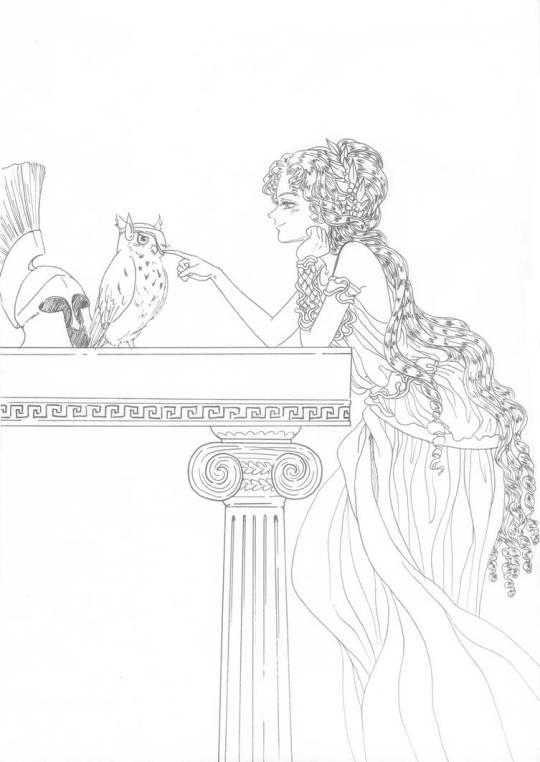
The Lady Athena with her owl 🦉
According to the Roman writer Ovid, Athena's owl was named Nyktimene 🏛🏺
#athena#lady athena#goddess#greek goddess#goddess of wisdom#olympian#metis#zeus#athens#athenian#parthenon#owl#little owl#ancient greece#greece#the grey eyed one#🦉🏛🏺
14 notes
·
View notes
Text

Carneia (festivity) "The chief centre of his worship was Sparta, where the Carneia took place every year from the 7th to the 15th of the month Carneus ...During this period all military operations were suspended"
"The importance attached to the festival and its month is shown in several instances. It was responsible for the delay which prevented the Spartans from assisting the Athenians at the Battle of Marathon."
Sparta !!
I've decided to give them the traits of lions based on the fact that the kings of sparta said they came from Heracles, who is usually depicted wearing a lion pelt ! (their two royal lineages were descended from twin brothers, Eurysthenes and Procles, who were themselves descended from Heracles) + the Lambda Letter (Λ) That was depicted in their shields!
Athens
I base them on the symbol of Athens that is Athena and as the Owl , nothing much to say other than I love Plato's philosophy :D
Corinth
Decided to give them Pegasus traits based on a legend :
"... Bellerophon, who became king of Corinth, tamed Pegasus with the aid of a golden bridle given to him by the goddess Athena. So Pegasus appears on many coins of Corinth and her colonies."
Troy
Gave them horse traits since the sacret animal for them was the horse, same reason why in the Trojan War the Achaeans used a wooden horse to go past the walls and win!
" The end of the war came with one final plan. Odysseus devised a new ruse – a giant hollow wooden horse, an animal that was sacred to the Trojans. It was built by Epeius and guided by Athena, from the wood of a cornel tree grove sacred to Apollo, with the inscription: "The Greeks dedicate this thank-offering to Athena for their return home". "
43 notes
·
View notes
Text
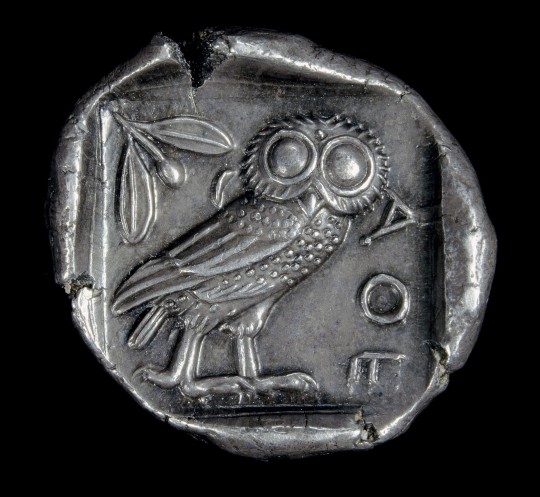
Reverse side of an Attic silver tetradrachm (τετράδραχμον, 'four drachmas'), depicting the owl of Athena facing forward, with the abbreviation ΑΘΕ (ΑΘΕΝΑΙΩΝ, 'of the Athenians'), indicating the coin's origin. Such coins were often referred to as glaukes (γλαῦκες, 'little owls') and became widespread throughout the Aegean during the 5th century BC as Athenian dominance over the eastern Mediterranean grew.
🏛️: © The Trustees of the British Museum
#classics#classical antiquity#classical greece#ancient greece#ancient greek#greece#greek#ancient history#athens#ancient athens#athena
386 notes
·
View notes
Text

Athena / Minerva
A drachma showing Athena or Minerva (Athens, modern Greece's capital and one of the most powerful of the ancient Greek city-states, is named after the goddess of wisdom, Athena, also known as Pallas Athena, or Minerva to the Romans. She appears left on a silver Athenian coin from c. 450 BCE accompanied by her symbol, the owl.
Fitzwilliam Museum, Cambridge Inv. CM.383-1978
11 notes
·
View notes